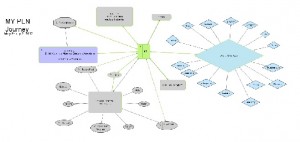Over the past few days I have been scouring the web and the UBC library for articles, books, blogs, wikis, basically anything I can find, on personal learning networks, and I made an interesting discovery – many of the reviewed articles are written by librarians.
Initially I thought this was a little unusual, until I came across this brief piece written by Kelly Werthmuller, My Crazy Road to Finding My PLN. In it she talks about the isolation associated with being the sole librarian in a brick and mortar school; it was her feelings of collegial confinement that motivated her to create her own PLN.
As an alternate high school teacher I can relate to Kelly. For the past 16 years I have worked in various alternate schools throughout Vancouver and the lower mainland. My first school had 4 teachers, my current school has two and a half, and in my previous school, I was the only teacher. I felt incredibly alone. I lived to see other teachers. I kid you not! I yearned to talk about teacher things – lesson plans, modifying curriculum, using technology, meaningful assessment, etc.
For Kelly, initiating a PLN and connecting with people from around the globe has helped her take control of her professional development. It has helped her stay current on issues and trends that matter to her personally and professionally. She no longer feels isolated, she feels empowered and liberated.
I’m with Kelly, while the people I work with are wonderful, knowledgeable people, they are not enough for me, and I am not enough for them! I want to be ethereally surrounded, as Kelly so perfectly says, “with people who will help me THINK, CREATE, SHARE, and GROW.” And the broader my network, the more refined my practice will be, and that can only serve to benefit my students, my colleagues, my administration, and even the parents of my students.
So now the challenge is to start investigating the most effective means of forming meaningful and relevant connections around the globe.


